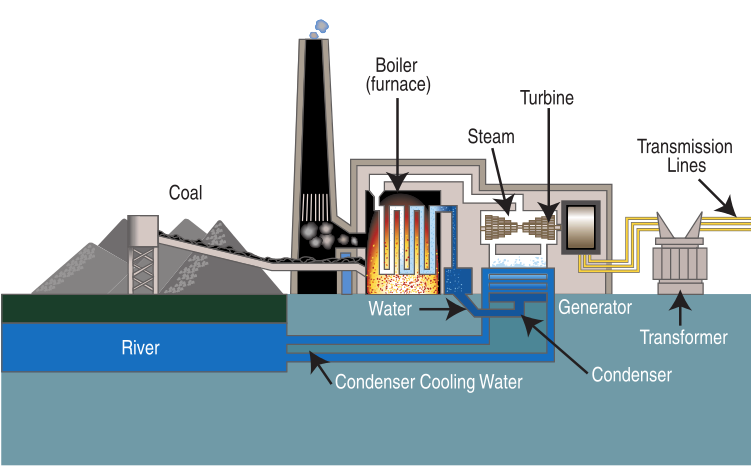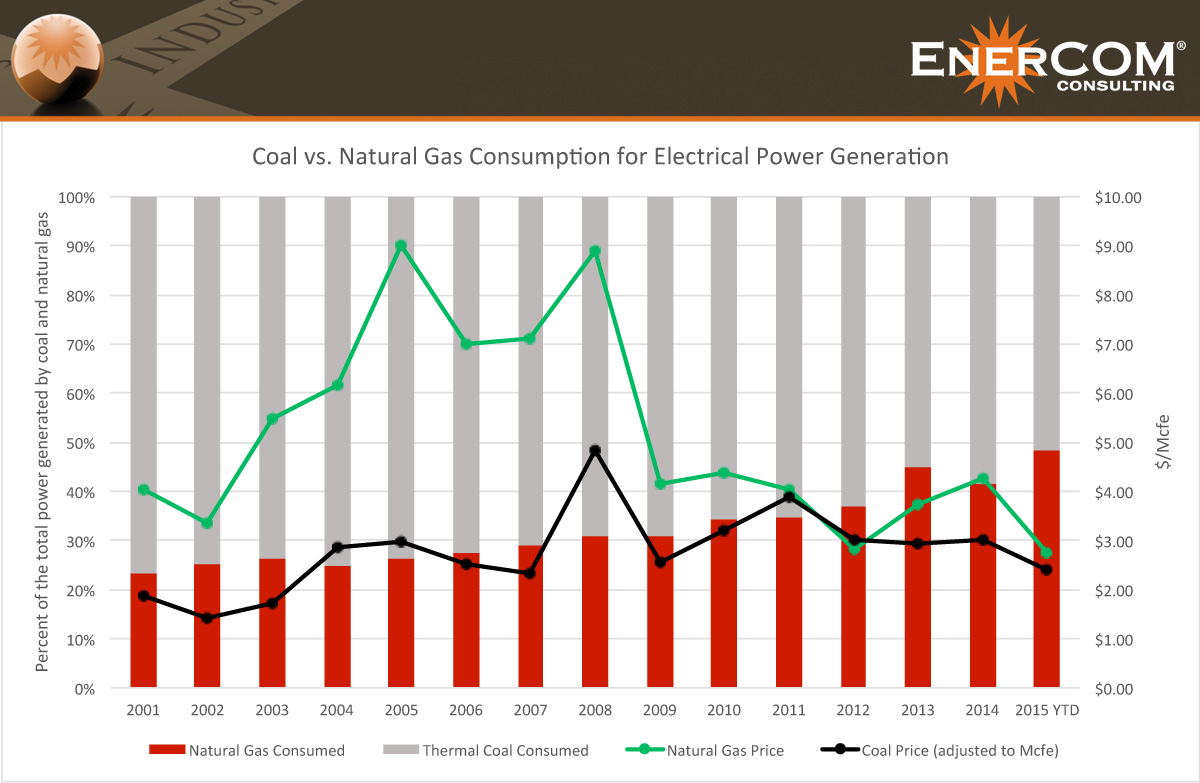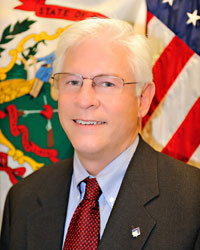27 States are Suing to Stop the CPP, Where do Things Stand?
On August 3, 2015, President Obama and the U.S. Environmental Protection Agency announced the Clean Power Plan, which is described on the EPA website as “a historic and important step in reducing carbon pollution from power plants that takes real action on climate change.” The Clean Power Plan mandates the federal government through that agency to zero in on the carbon emissions coming out of coal-fired power plants. The rule officially takes effect Dec. 22, 2015 – tomorrow.

The CPP has a goal of reducing carbon emissions from U.S. electricity generators by 32% by 2030. Many of the U.S. coal-fired power plants won’t be able to achieve that goal without retrofits that are cost-prohibitive. As a result of ever strengthening air pollution rules, power companies have started closing coal plants or converting them to natural gas-fired electricity generation plants.

For the month of April 2015, natural gas surpassed coal as the largest fuel source for electrical power generation in the U.S., for the first time.
A coalition of 24 states and a power company filed a suit to stop the Clean Power Plan, calling it an unlawful federal bid to control state power grids, in the U.S. Court of Appeals for the District of Columbia “on the same Friday that the Environmental Protection Agency published the plan, also known as the 111(d) rule, in the Federal Register,” reported the Washington Times in October.
According to a November report on the University of California Berkeley School of Law and UCLA Law School’s Legal Planet jointly sponsored website, “opponents were unsuccessful in their attempts to persuade courts to take the unusual action of hearing pre-publication challenges to the Clean Power Plan. Now that the final text is published in the Federal Register, lawsuits are fair game. Per the Clean Air Act, challengers have 60 days from the date of publication—until December 22nd—to file petitions for review in the D.C. Circuit Court of Appeals.”
According to the law schools’ joint website, “West Virginia filed a petition for review of the Clean Power Plan together with 23 other states: Alabama, Arizona, Arkansas, Colorado, Florida, Georgia, Indiana, Kansas, Kentucky, Louisiana, Michigan, Missouri, Montana, Nebraska, New Jersey, North Carolina, Ohio, South Carolina, South Dakota, Texas, Utah, Wisconsin, and Wyoming. State petitioners argue that ‘the final rule is in excess of the agency’s statutory authority, goes beyond the bounds set by the United States Constitution, and otherwise is arbitrary, capricious, an abuse of discretion and not in accordance with law’.
“West Virginia Assistant Attorney General J. Zak Ritchie apparently arrived at the clerk’s office extra early in order to be the first in line to file a lawsuit, thus ensuring West Virginia would be the first named party. It is fair to say that state challengers are eager for battle.”

In November, Oil & Gas 360® interviewed West Virginia’s Secretary of Commerce Keith Burdette about the effects of the administration’s self-declared ‘war on coal’ on the economy of West Virginia. Burdette, an outspoken lifelong resident of West Virginia, presented a history-based and poignant review of the meaning of the coal industry to the residents of his state and the meaning of that industry to the Appalachian region and to the country. That interview may be accessed here.
“The states also filed a motion seeking a stay—a freeze of the rule—pending the court’s decision about the rule’s legality, claiming that ‘the States are being immediately and irreparably harmed by EPA’s illegal effort to force States to reorder their electrical generation systems’ and by ‘a timeline intended to force the States and other entities to make irreversible decisions before judicial review concludes’,” the California law schools’ website reported.
“Oklahoma, North Dakota, and Mississippi filed separate petitions for review, meaning more than half of U.S. states (27) oppose the Clean Power Plan. The states challenging the Clean Power Plan are … mostly high-emitting or coal-heavy states that have long resisted serious climate action. All had previously declared their intention to challenge the Clean Power Plan, and many argued in prior lawsuits that EPA lacks authority to regulate greenhouse gases under the Clean Air Act,” the Berkeley Law/UCLA Law website said.
Status of Legal Actions to Stop CPP
With the CPP taking effect in less than 24 hours, Oil & Gas 360® asked Haynes and Boone’s Suzanne Murray for an update and her recap of where the various legal actions associated with the CPP stand to date.

Murray recapped the status of the legal actions as follows:
“On December 15, 2015, the DC Circuit remanded the mercury standards for power plants promulgated under section 112 of the CAA to EPA and directed the Agency to issue final standards by April 15, 2016.
“There are parties (27 States and several industry groups) in the CPP litigation who contend that a version of the Section 111(d) of the CAA (there are 2, one promulgated by the House and one by the Senate) says that if a power plant is already regulated under the CAA (e.g. the mercury rule under section 112), then it cannot be regulated further by section 111(d). As a result, EPA would be precluded from imposing the requirements of the CPP on April 15 when the mercury standards are final.
“If that weren’t enough to argue over, EPA is currently taking comment on the final standard for the Cross State Air Pollution Rule for the 2008 Ozone NAAQS, which means that utilities will have to tighten controls so that they do not contribute to violations of the ozone standards in neighboring states. Also, the Regional Haze rules require states to promulgate SIPs that control emissions of pollutants that inhibit visibility in the Nation’s National Parks, including ozone, Nox, So2 and PM. The controls proposed in those plans largely mirror the controls, or shut down strategy that EPA proposed in the CPP.”
Murray said that it is her take that “if the court allows the regulation of existing power plants under both section 111(d) and 112, it would benefit power plants, states and EPA to consider a resolution to the CPP litigation in which compliance with the mercury rule, the cross state rule and the regional haze requirements would be deemed compliance with the CPP.”
Visit Oil & Gas 360® for the latest international oil and gas news and analysis, company reports, financial news and interviews with CEOs and global energy leaders.







